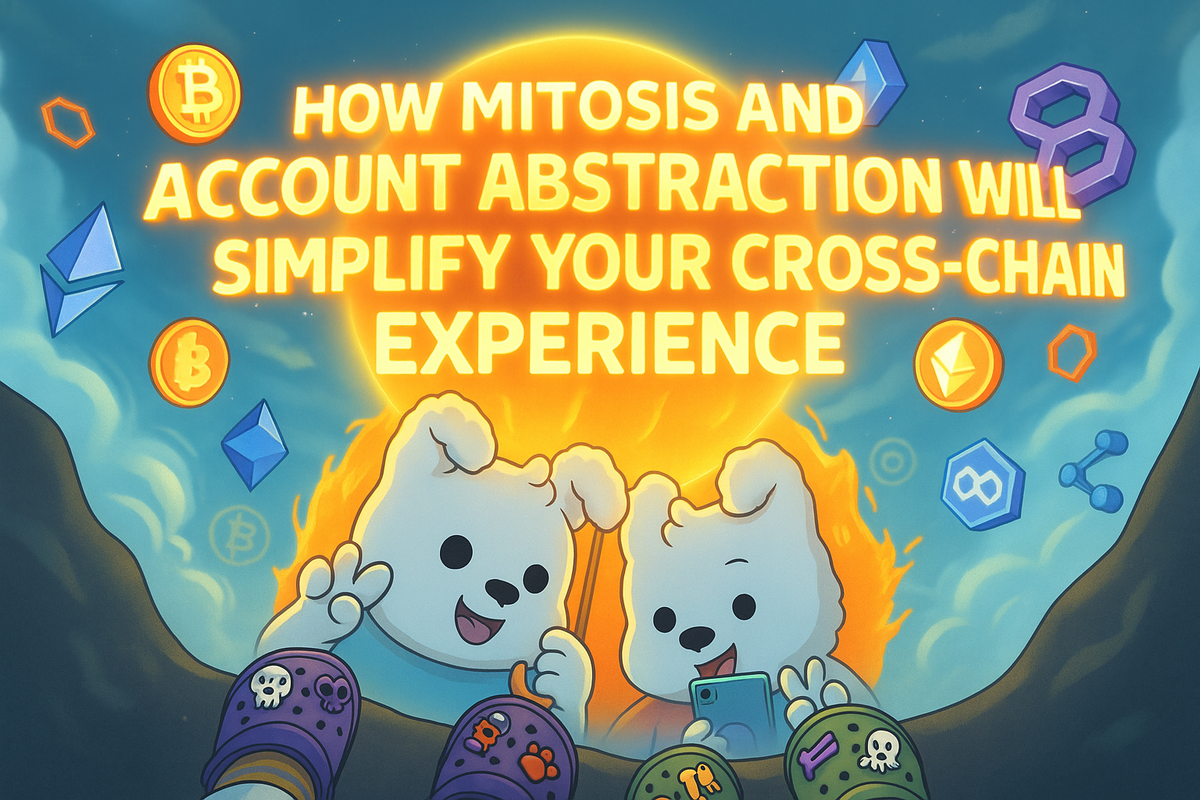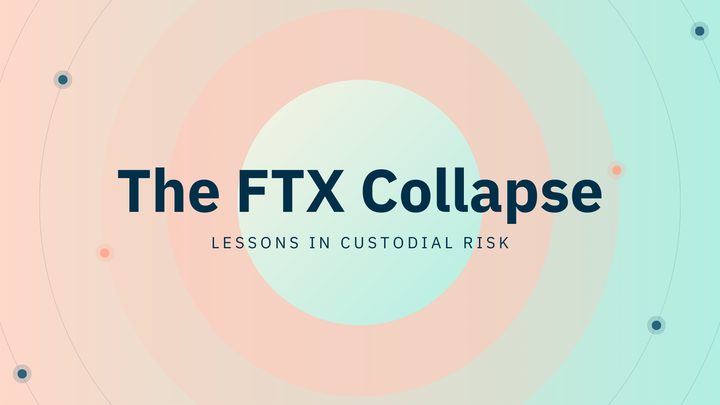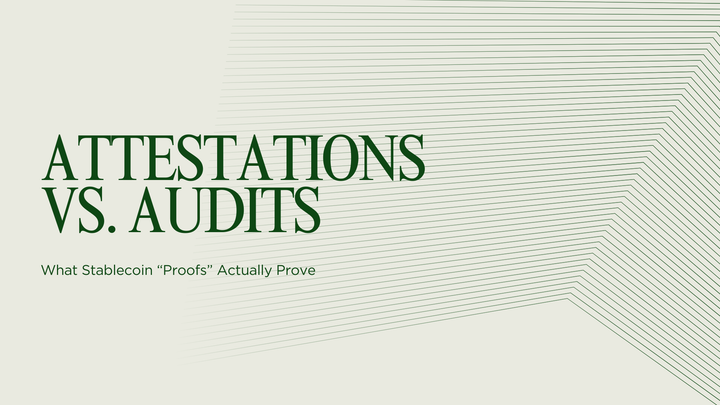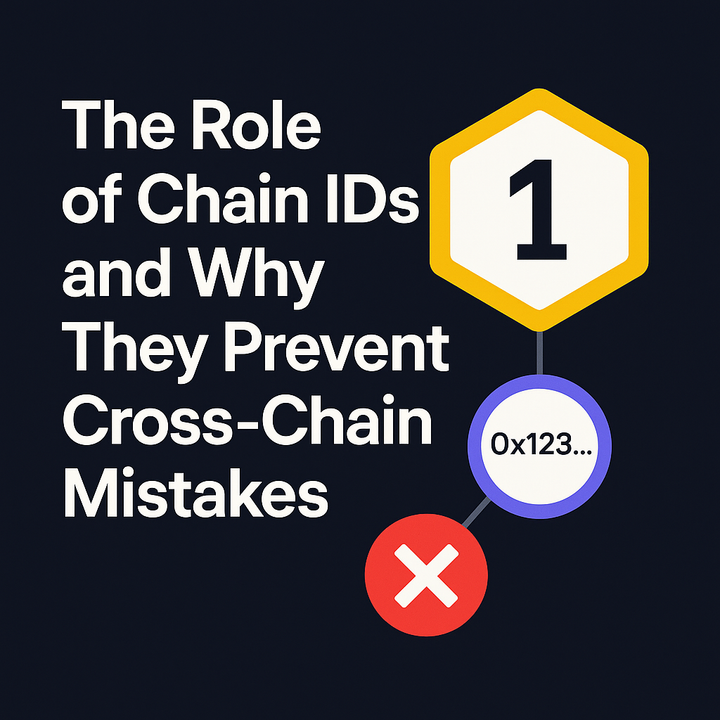The Wallet of the Future is Already Here? How Mitosis and Account Abstraction Will Simplify Your Cross-Chain Experience

1. Introduction: The Web3 User's Headache – Complexity and Gas
The world of Web3 and decentralized finance (DeFi) opens up incredible possibilities, but for many users, especially newcomers, it still remains terra incognita, full of complexities. Two perennial "headaches" that deter mass adoption are:
- Managing Private Keys and Seed Phrases: The need to independently store and manage complex cryptographic keys is a huge responsibility and a constant risk of loss or theft. Mistakes here can be irreversible.
- Gas (Network Fees): Every blockchain transaction requires payment of "gas" (network fees) in that network's native token (ETH for Ethereum, MATIC for Polygon, etc.). This means the user must:
- Understand what gas is and how it works.
- Have the native token of every network they want to interact with in their wallet, even if they just want to transfer stablecoins.
- Monitor gas prices and choose the optimal time for transactions.
These barriers significantly complicate the user experience (UX) and make Web3 less attractive compared to familiar Web2 services.
Account Abstraction (AA): A Revolution in Wallet UX
Fortunately, the crypto community is actively working to solve these problems. One of the most promising directions is account abstraction (AA), best known in the Ethereum context through the ERC-4337 standard.
What is account abstraction in simple terms? It's a concept that aims to make interacting with the blockchain as convenient as using regular web applications by "abstracting" the complexity of account and transaction management away from the user.
Key capabilities unlocked by AA (using ERC-4337 as an example):
- Smart Contract Wallets: Instead of traditional Externally Owned Accounts (EOAs) managed by a private key, users get wallets that are themselves smart contracts. This allows for flexibility in customizing logic.
- Gas Payments with Any Token: Users can pay network fees not only with the native token but also, for example, with stablecoins (USDC, USDT) or other ERC-20 tokens. Special actors (Paymasters) can sponsor gas or accept payment in other tokens.
- Social Wallet Recovery: Instead of memorizing a seed phrase, users can set up wallet access recovery through trusted individuals (friends, family) or other methods (e.g., two-factor authentication).
- Bundled Transactions: The ability to combine multiple operations into a single transaction, saving on gas and simplifying complex interactions.
- Automation and Subscriptions: Smart contract wallets can perform pre-programmed actions without constant user confirmation.
Account abstraction is a huge step towards making Web3 truly mainstream.
The Multichain Challenge for Account Abstraction
However, when we bring the concept of AA into the multichain world, new complexities arise. If a user wants a smart contract wallet with the ability to pay gas with USDC on Ethereum, Polygon, and Arbitrum, they would potentially need:
- To deploy (or have) their smart contract wallet on each of these networks.
- To have USDC on each of these networks to pay gas via a Paymaster.
- For the Paymaster to support USDC payments on each of these networks.
This again leads to fragmentation and complication, negating some of the benefits of AA. How can a truly unified and seamless smart wallet experience be provided across all networks?
Mitosis: The Key to Cross-Chain Account Abstraction
This is precisely where Mitosis, a protocol for the secure and efficient movement of liquidity between networks, can play a crucial role. Mitosis can become that "invisible" bridge ensuring the smooth operation of account abstraction across the entire Web3 landscape.
How can Mitosis enhance cross-chain AA?
- "Fueling" Gas from Another Network: Allowing a Paymaster or smart wallet to automatically convert and transfer user funds from one network (where they have a balance) to another (where gas needs to be paid) via Mitosis.
- Synchronizing Wallet States (Potentially): Facilitating the transfer of wallet setting data (e.g., trusted recovery parties) between its instances on different networks.
- Unified Balance for Cross-Chain Operations: Creating the illusion of a single balance where a user can initiate an action on one network, and the necessary funds for execution and gas payment are automatically "pulled" from other networks via Mitosis.
What Will You Learn From This Article?
In this article, we will explore in detail:
- How exactly Mitosis can integrate with account abstraction systems like ERC-4337.
- What specific user scenarios become possible thanks to the synergy of Mitosis and AA.
- Why this combination is key to creating a truly convenient and intuitive cross-chain experience for millions of future Web3 users.
We will show how Mitosis helps not just move assets, but build bridges to a future where interacting with the decentralized world will be as simple as using your favorite mobile application.
2. Mitosis + Account Abstraction: Future Scenarios and Benefits
The synergy between Mitosis and account abstraction (AA) systems can generate numerous innovative solutions that will dramatically improve the user experience in the multichain environment. Let's look at specific scenarios and the benefits of such a combination.
Scenario 1: "Pay Gas From Anywhere, With Anything"
- Today's Problem: A user wants to make a swap on a DEX on the Polygon network but has no MATIC to pay for gas, though they have USDC on Arbitrum. They have to manually transfer USDC to a CEX, buy MATIC, withdraw MATIC to Polygon – a complex and lengthy process.
- Solution with Mitosis + AA:
- Transaction Initiation: The user, in their smart wallet (with AA support), initiates the swap on Polygon.
- Request to Paymaster: The wallet determines the user has no MATIC but has USDC on Arbitrum. It contacts a Paymaster willing to sponsor the transaction on Polygon by accepting payment in USDC from Arbitrum.
- Cross-Chain "Fueling" via Mitosis: The Paymaster (or the smart wallet itself through delegated logic) uses Mitosis to quickly and cheaply transfer the necessary amount of USDC from the user's Arbitrum account to its own address or to directly convert it into MATIC and pay the gas on Polygon. Mitosis provides liquidity for this swap and secure transfer.
- Execution of Main Transaction: The swap transaction on the DEX in Polygon is successfully executed, gas paid.
- Benefit for the User: Complete gas abstraction. The user simply performs the desired action, and the system figures out how to pay the fee using their assets from any supported network.
Scenario 2: Unified Cross-Chain Balance and One-Click Actions
- Today's Problem: To assess their overall DeFi portfolio, a user needs to check balances across multiple networks and wallets. Moving assets for rebalancing or investment requires many steps.
- Solution with Mitosis + AA:
- Aggregated Balance: A smart wallet with AA can display the user's assets from all networks supported by Mitosis as a single virtual balance.
- Intent-Oriented Actions: The user can express an intent: "I want to invest 1 ETH in the highest-yielding staking pool."
- Automatic Execution via Mitosis: The smart wallet (or a backend service working with intents) finds the best pool (e.g., on Solana), determines the user has ETH on Ethereum, and automatically uses Mitosis to transfer the ETH to Solana and stake it. Gas at all stages can also be paid automatically from the user's available assets.
- Benefit for the User: Significant simplification of multichain portfolio management. Complex cross-chain strategies become available in just a few clicks (or even via voice commands in the future).
Scenario 3: Seamless Onboarding of New Users to Any Network
- Today's Problem: A new user wants to try a dApp on an unfamiliar L2 network. They first need to buy the L2's native token on a CEX (if available), withdraw it, set up a wallet... A high barrier.
- Solution with Mitosis + AA:
- Smart Wallet Creation: The user creates a smart wallet that supports multiple networks.
- Deposit in Any Currency/Network: The user can fund their smart wallet, for example, by sending USDC from an exchange to their address on the Ethereum network.
- First Interaction with dApp on L2: The user decides to use a dApp on the Optimism network. They don't need to worry about gas on Optimism. Their smart wallet, using a Paymaster and Mitosis, will automatically "take" a portion of their USDC from Ethereum, transfer the necessary amount via Mitosis to pay for gas (converting it to ETH on Optimism), and allow them to make their first transaction.
- Benefit for the User (and dApps): Radical reduction of onboarding barriers. Users can start using applications on any network 가지고
having funds on only one of them. This significantly expands the potential audience for dApps.
Benefits of Mitosis and Account Abstraction Synergy
- For Users:
- Invisible Multichain: The complexity of interacting with different networks is hidden "under the hood."
- Convenient Gas Payments: The ability to pay fees with any popular token, regardless of the network's native token.
- Enhanced Security and Flexibility: The benefits of smart wallets (social recovery, bundled transactions) extend to cross-chain operations.
- For dApp Developers:
- Audience Expansion: Easy onboarding of users from any network.
- Simplified Development of Cross-Chain Features: Instead of complex bridge integrations, developers can rely on the combination of AA wallets and Mitosis.
- Creation of New User Scenarios: The ability to offer users complex cross-chain operations as simple one-click actions.
- For the Mitosis Ecosystem:
- Increased Transaction Volume: The easier it is for users to perform cross-chain actions, the more transactions will pass through Mitosis.
- EOL Growth: A portion of the fees from these transactions can replenish the Mitosis treasury, increasing its EOL.
- Strengthening Role as Key Infrastructure: Mitosis becomes an indispensable component for the new generation of user-friendly Web3 applications.
Conclusion: Mitosis – Making the Complex Simple for the Future of Web3
Account abstraction is a powerful trend that promises to make Web3 an order of magnitude more user-friendly. However, its full potential in the multichain world can only be unlocked with reliable and efficient infrastructure for interoperability.
Mitosis, with its focus on the secure and efficient movement of liquidity, perfectly complements the concept of account abstraction. Together, they can create a truly seamless cross-chain experience where users can forget about complexities like managing gas on different networks or manually moving assets via bridges.
This is a future where Web3 becomes truly accessible to everyone, and Mitosis plays the role of an invisible yet indispensable engine in this future, ensuring the free movement of value and information between all corners of the decentralized universe.
Learn more about Mitosis:
- Explore details on the official website: https://www.mitosis.org/
- Follow announcements on Twitter: https://twitter.com/MitosisOrg
- Participate in discussions on Discord: https://discord.com/invite/mitosis
- Read articles and updates on Medium: https://medium.com/mitosisorg
- Blog: https://blog.mitosis.org/



Comments ()